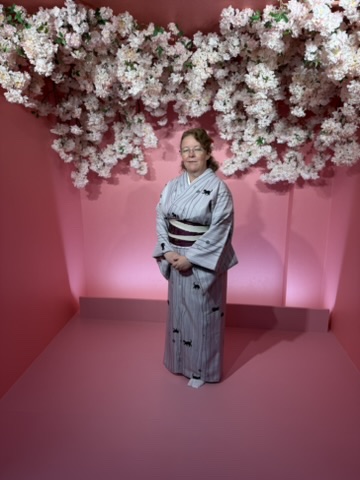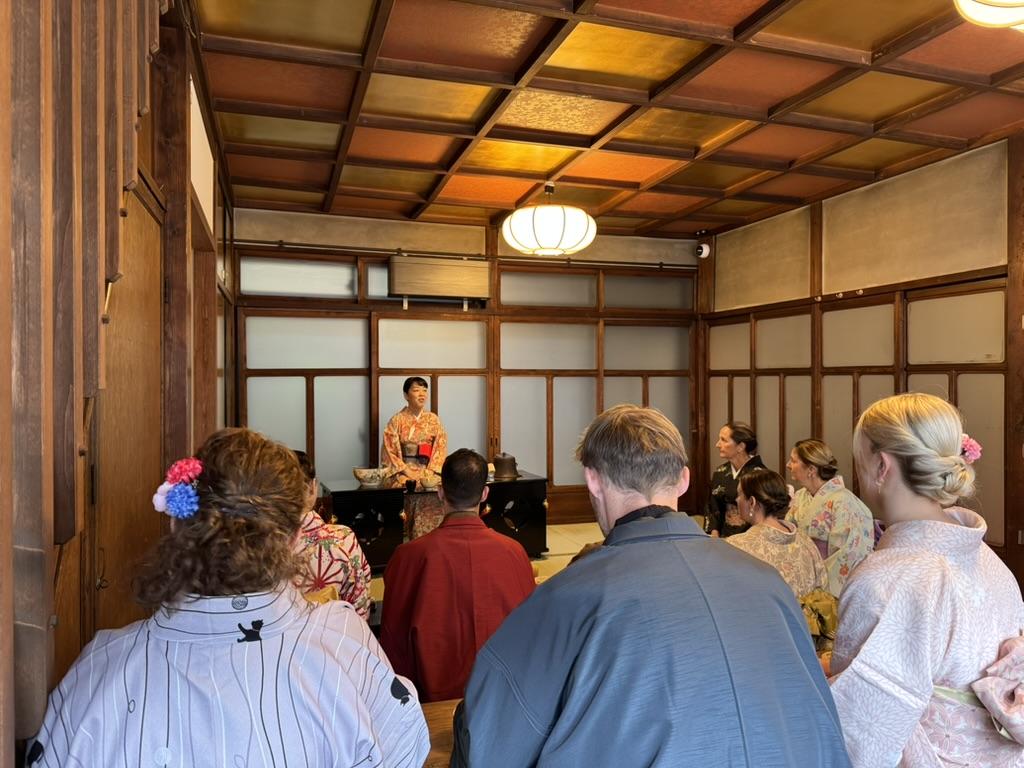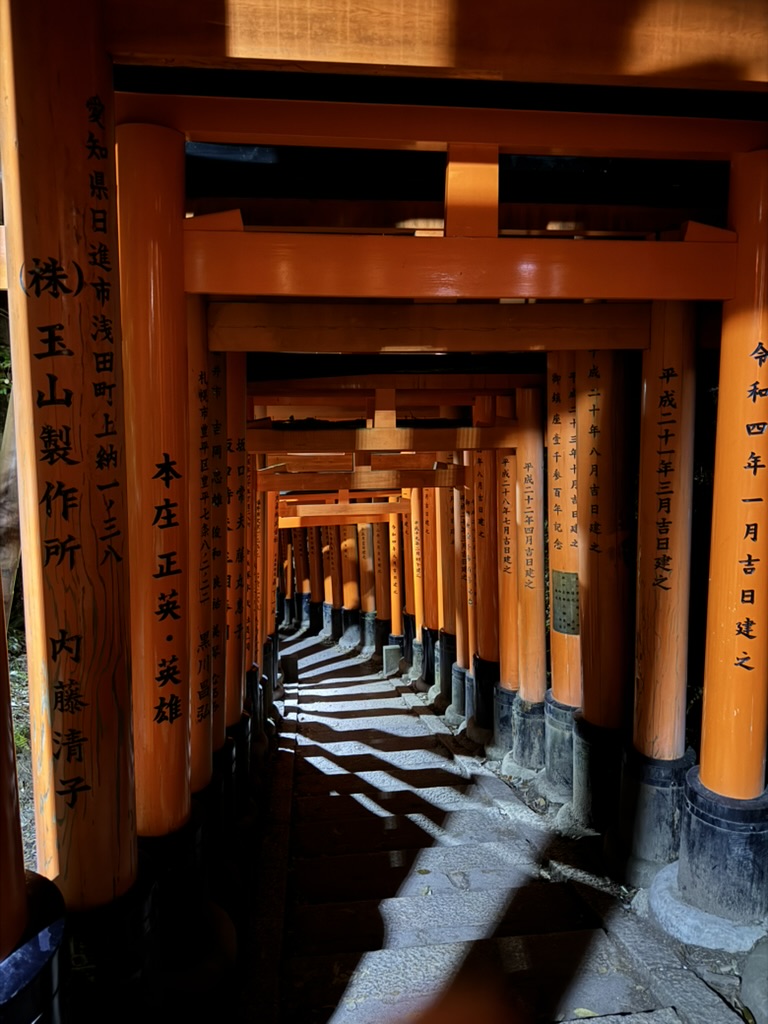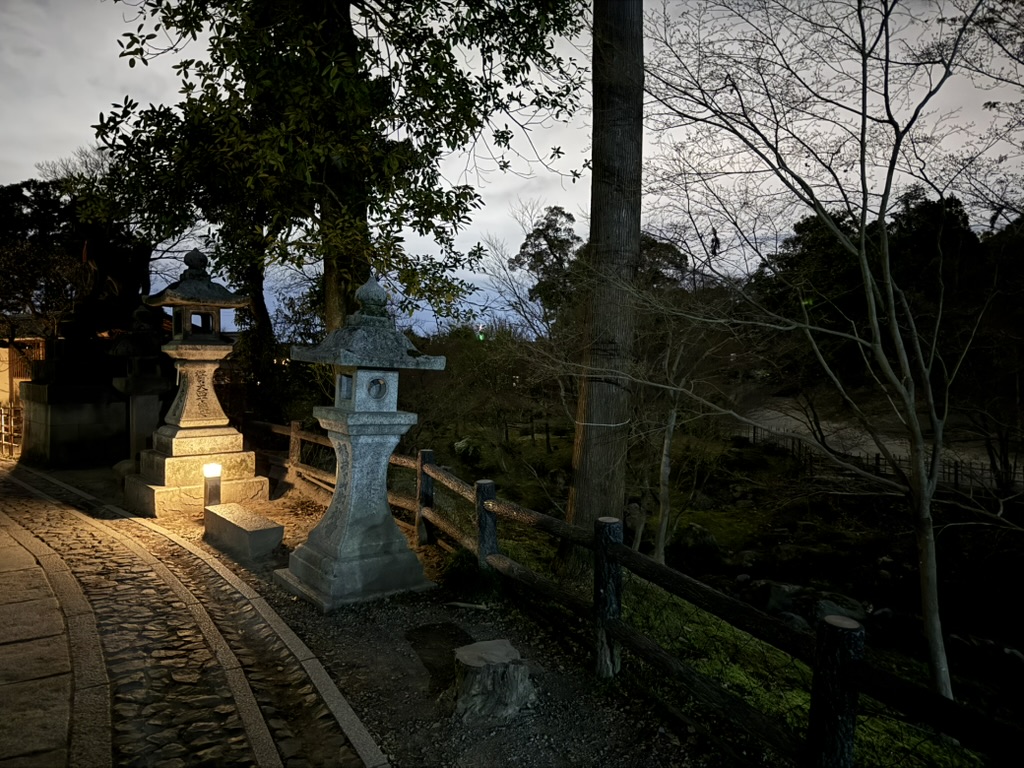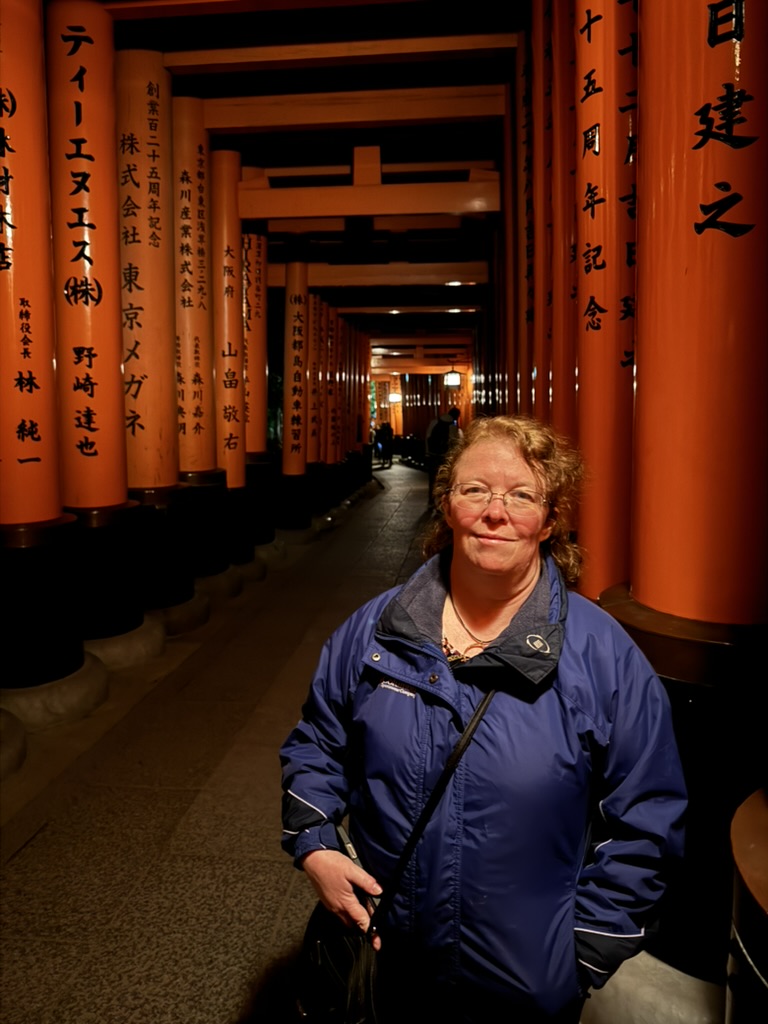
We got up rather early this morning, our second day in Kyoto. We wanted to grab breakfast and walk around a little. We had a late morning reservation with our friends at a kimono and tea ceremony experience. We made our way into the main room with other guests. Here they taught us about making mochi sweets.
Mochi, Japan’s beloved chewy treat, is a delightful delicacy made from glutinous rice pounded until it becomes soft and stretchy. Its subtle sweetness comes not from sugar overload but from the natural sweetness of rice. Mochi has been around for centuries too, originally enjoyed during Japanese New Year celebrations to bring good luck—because who wouldn’t feel lucky biting into a squishy, cloud-like snack? Today, mochi is a global superstar, appearing in everything from ice cream to donuts. Its popularity proves that sometimes, all you need is a simple, satisfying bite to win hearts… and possibly stick your teeth together.
We were introduced to Mochi in its raw form. It was kind of like Playdough, but a little softer. We were taught how to work it, to loosen it up, add color to it. Using traditional tools, we were taught to etch in creases, grooves and dimples. In the end, we made mochi flowers.
We were dismissed then and led out to pick our Kimono’s for the ladies and Yukata/Hakama for the men. It was here that I had a moment of panic. Besides the attire, we were given two bags: one for our clothes and another embroidered one that was part of our outfit. These were like smaller purses or pouches and I chose one with a rabbit on it. We were told to put our valuable in the these. Well, there were plenty of us in there and I emptied my pockets of my wallet, phone, and passport and picked the bunny bag. I put it down to finish getting changed (with the help of the staff) and when I came back, my bag was not where I put it down. I found another with the same design and color further down the bench, but it was empty and so was the room (nearly). The staff seemed confused, and without a phone to help translate, my stress went way up. I figured it was a mistake, I mean, crime in Japan is relatively low. Still, I needed those things back. Another staffer came in and he spoke more English. I explained and he explained to the dressing room staff who now understood and were as concerned as I was. They went out in search of the similar bag and found it within minutes. The person was apologetic and surprised he did not notice it was heavier. I made sure he understood I was just happy to get that back. After securing my belongings, Mike and I went to meet the others.
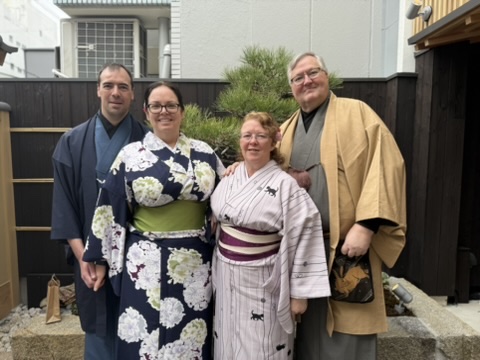

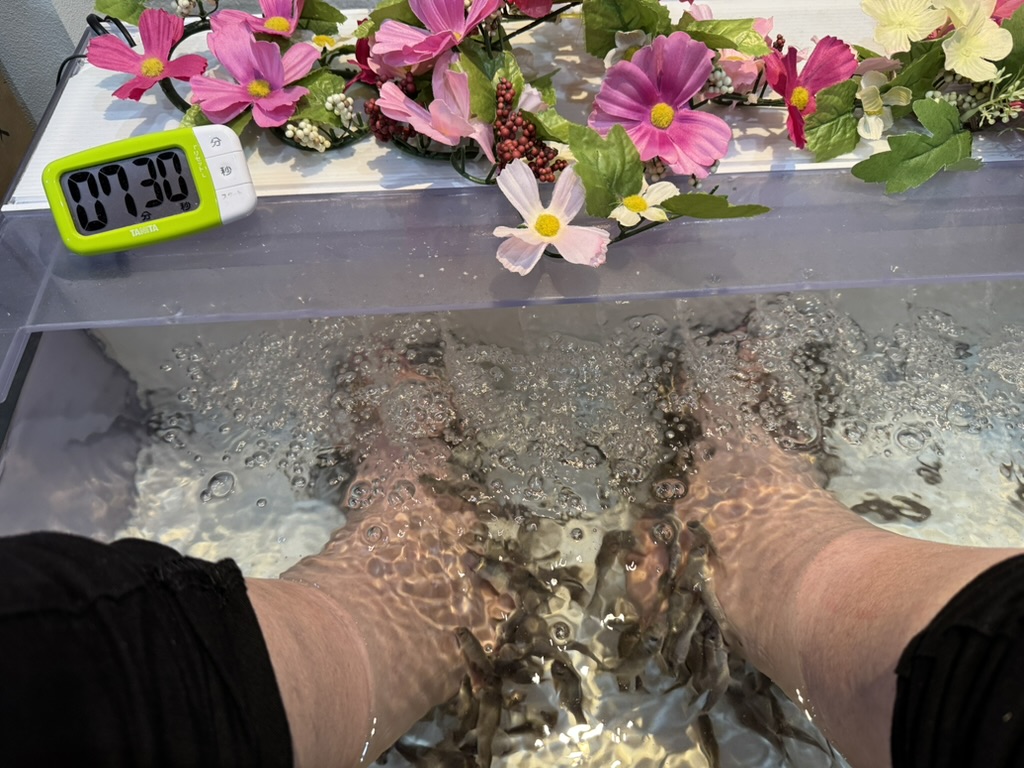
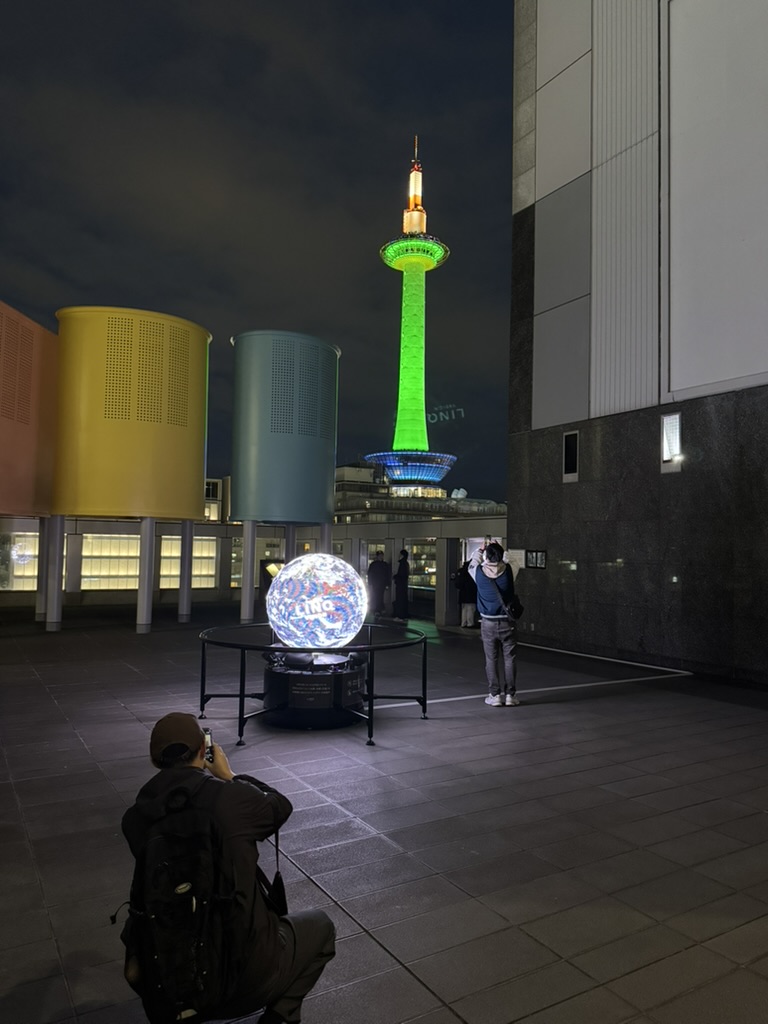
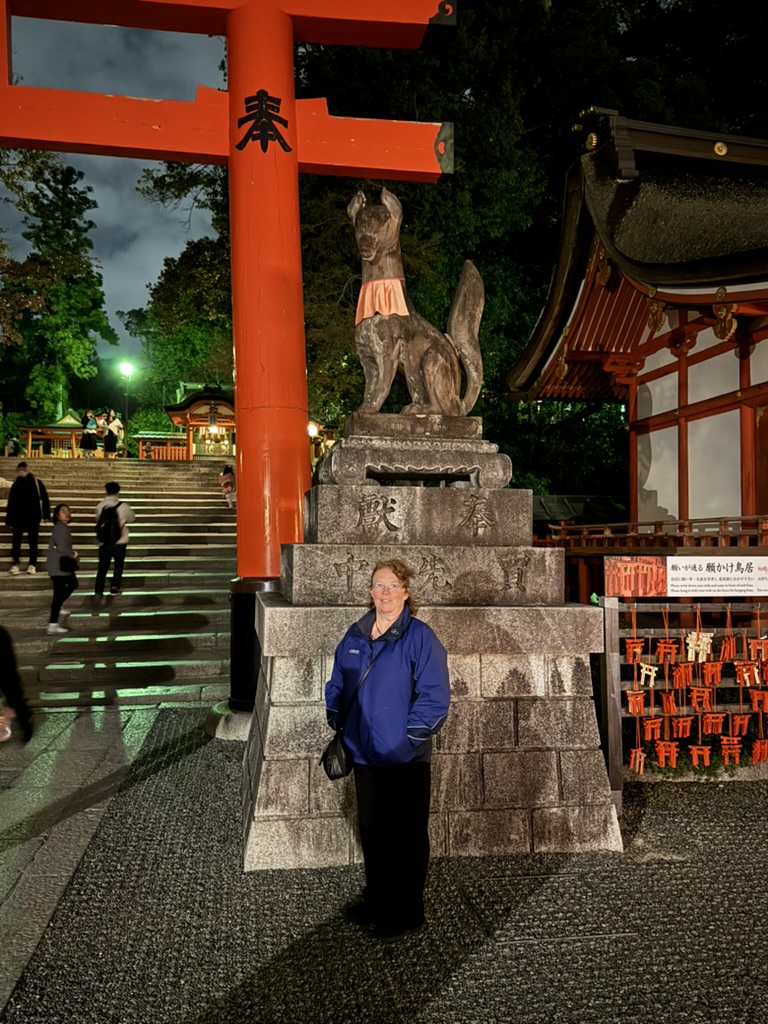
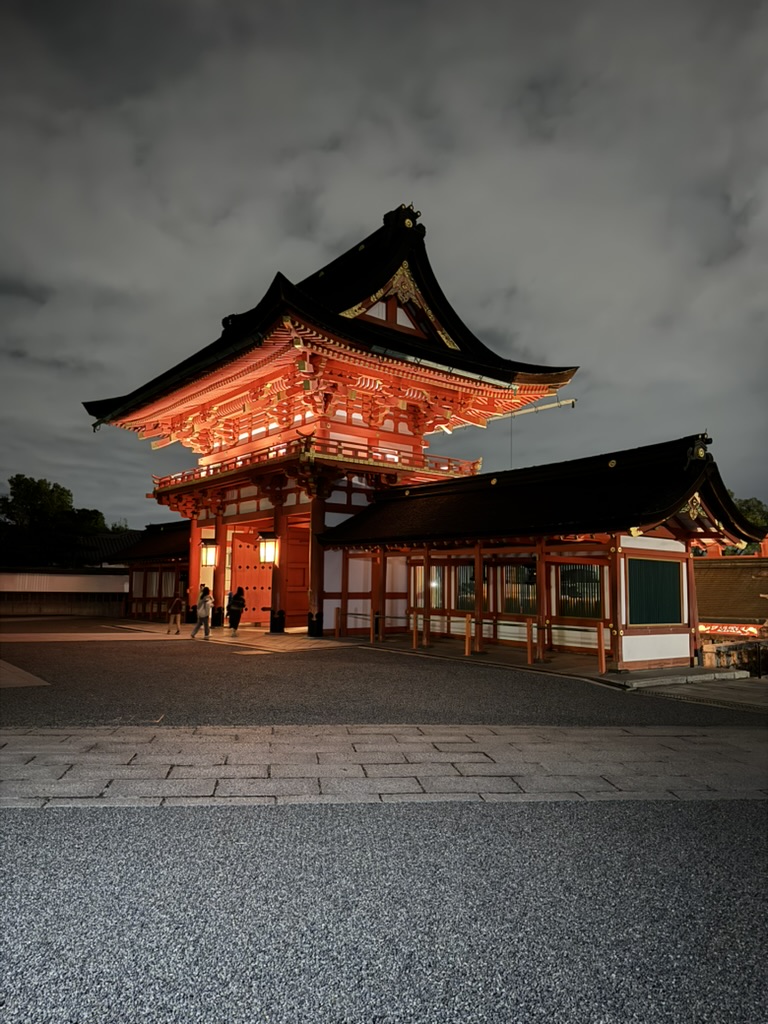
Before we get onto what is next, I wanted to tell you about the traditional outfits.
Kimono: A traditional Japanese garment characterized by long sleeves and a wrap-around design. It is typically made from silk or other fine fabrics. It is typically worn for various occasions, including formal events, ceremonies, and festivals. Kimonos can also be worn daily, depending on the context and style. Kimonos come in various styles, colors, and patterns, often reflecting the season, occasion, or wearer’s status. There are accessories to make it complete. Typically it is worn with an obi (a wide belt) to secure it, along with accessories like obijime (cords), obiage (obi scarf), and haneri (collar). There are several types of kimonos, including the Furisode which is worn by young unmarried women, featuring long sleeves. The Tomesode, a formal kimono for married women, usually with shorter sleeves and often adorned with patterns below the waist. And the Iromuji, a solid-colored kimono suitable for various occasions. The kimono is a symbol of Japanese culture and heritage, representing elegance and tradition.
The men’s equivalent to a kimono in Japan is called a Yukata or a hakama. The Yukata is a casual, lightweight cotton robe typically worn in the summer or at festivals. It is often worn during festivals, at ryokans (traditional inns), or at home. It usually features a simple design and is often worn with an obi (a belt). On the other hand, the Hakama
is a traditional pleated skirt-like garment worn over a kimono. It is commonly worn for formal occasions, such as ceremonies, martial arts, and weddings. It can be worn with a kimono and is often associated with more formal attire.
Both garments reflect traditional Japanese culture and are worn in different contexts.
Once the dresses and outside, we made our way around the streets basking in the attention we were getting from our traditional accoutrements. We also had the opportunity to get our photos taken. After a short time, we went back inside for the tea ceremony. Usually more intimate gathering of the host and a few guests, this was a much larger group. I’m not complaining, we had people from all around the world and had fun at each other’s expenses. Our guide took us through the different parts of the tea ceremony, explaining the delicacy of the cups the bowl and the whisk made a bamboo. She explained that there was a purpose for each movement in the ceremony. She explained that tea cups only had a design on one side, and that side was always presented to the guest. Once the guest accepted a cup, they would turn the design to face the host(s). The more elaborate design, the more influential that person was thought to be.
As I said, mochi is made of rice paste. It is subtly sweet, but not overpowering. And while there are a variety of teas, the one usually used for the tea ceremony is a green powdered tea called Matcha. I’m not much of a tea drinker, so I listened and prepared it as we were instructed. We were told during the instructions that Matcha had a slight bitterness to it and that mochi offered a bit of a balance. We were told to open up one of our mochi sweets that we had made. We are then instructed to take a sip of the tea and a bite of the mochi, that the light sweetness and the slight bitterness balanced to each other out. I guess you can say that was kind of true in my case. I found the combination to be rather neutral, that is to say I didn’t dislike it, but it is not something I would go out of my way for. Of course your experience may vary, and I would encourage you to try your hand at making sweets and brewing green tea.
Afterwards, we went with our friends to one of the shopping districts. Like the one in Osaka, these more pedestrian streets, mostly covered and packed with people. We made our way through, finding a couple of food shops. I think it was here that we also found a nice shop with sake tasting, and we bought a nice Sakaru sake. It was also here that we found a fish foot path. We couldn’t convince Megan or Mike to try it but Teresa and I did. The sign said it only tickled for the first two minutes and they were mostly right. We couldn’t stop laughing, and I’m not sure if it was because of the absurdity of it or the fact that it did indeed tickle. I also found it amusing that these little fish seem to like my feet more than Teresa’s, then again mosquitoes tend to like me more too. After the 10 minutes are up, my feet felt softer. We continued our shopping with our friends until it was time to part ways. There’s a museum Mike wanted to go see and Teresa and I just wanted to tour.
We ended up walking to one of the main streets, looking for a hop on hop off bus we like these buses. One reason is because they get you around the city and usually to the more touristy areas, but also because it gives your feet to rest. Also, if there’s not a tour operator, there’s usually a recorded tour that you can listen to in whatever language you speak and you can learn a lot about the area in from these. One tip, though, is that you get your tickets and board early with the expectation of touring most of the day. In our case, it was near the end of the day so we did not get as much use out of it as we probably could have. We made the best of it though, and the bus stopped at the main station. Above the train station was basically a mall stacked 11 floors high. It was enough in the evening that we were hungry, but we also couldn’t decide what we wanted to eat. We checked several restaurants for vegetarian options, and landed in a Katsu restaurant.
One of the sites we were told we had to go see was the Fushimi Inaria Tashi shrine. For those that don’t know the shrine is on top of the mountain and the path that leads to it is covered with Torii gates. I had seen pictures and the gates look like they laid into infinity. We are also warned at during the day, this is quite a busy place with lots of tourists. The best time to come is early in the morning or late at night. Well, it wasn’t late, maybe 8pm, but it was dark. We hopped the train and were there in just a few stops. We found the crowd at the base to not be too intense, but as we made our way up to the start of the Torii path, the crowds thinned to nearly nothing. Besides coming early or late (the grounds are open 24/7), another tip I would give is to make sure that you have comfortable shoes, shoes made for hiking. As I said, the shrine is at the top of a mountain and the path is mostly stairs. We didn’t have trouble walking per se, and we made it maybe halfway to 3/4 of the way up before we had to stop the lights that lead up the path are on posts outside of the gates, and the play of light in shadow on the steps made it difficult. So we found a good place to stop, rest, and start making our way back down.
This truly was a sight that I’m glad we got to see. I would highly recommend you add it to your itinerary as well if you ever make it to Japan.
